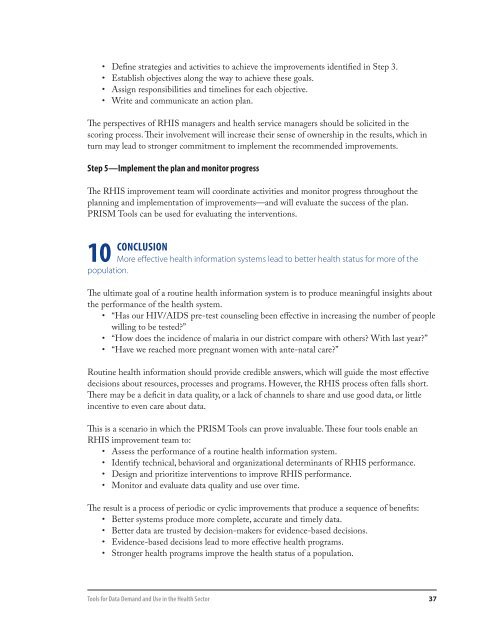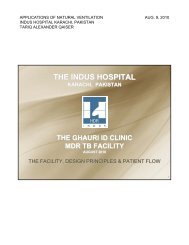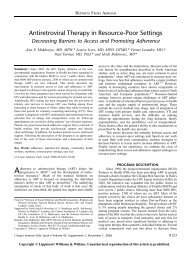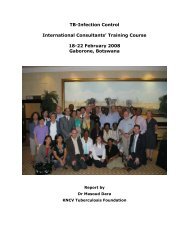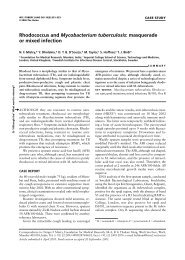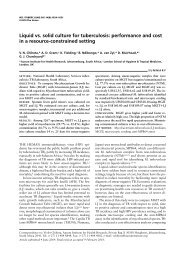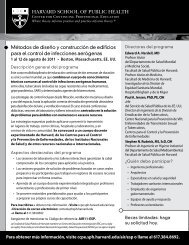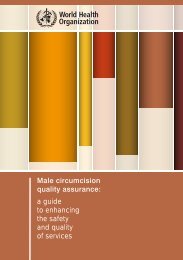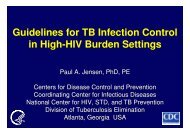PRISM_DescriptionOfTools.pdf - GHDonline
PRISM_DescriptionOfTools.pdf - GHDonline
PRISM_DescriptionOfTools.pdf - GHDonline
Create successful ePaper yourself
Turn your PDF publications into a flip-book with our unique Google optimized e-Paper software.
• Define strategies and activities to achieve the improvements identified in Step 3.<br />
• Establish objectives along the way to achieve these goals.<br />
• Assign responsibilities and timelines for each objective.<br />
• Write and communicate an action plan.<br />
The perspectives of RHIS managers and health service managers should be solicited in the<br />
scoring process. Their involvement will increase their sense of ownership in the results, which in<br />
turn may lead to stronger commitment to implement the recommended improvements.<br />
Step 5—Implement the plan and monitor progress<br />
The RHIS improvement team will coordinate activities and monitor progress throughout the<br />
planning and implementation of improvements—and will evaluate the success of the plan.<br />
<strong>PRISM</strong> Tools can be used for evaluating the interventions.<br />
10 Conclusion<br />
More effective health information systems lead to better health status for more of the<br />
population.<br />
The ultimate goal of a routine health information system is to produce meaningful insights about<br />
the performance of the health system.<br />
• “Has our HIV/AIDS pre-test counseling been effective in increasing the number of people<br />
willing to be tested?”<br />
• “How does the incidence of malaria in our district compare with others? With last year?”<br />
• “Have we reached more pregnant women with ante-natal care?”<br />
Routine health information should provide credible answers, which will guide the most effective<br />
decisions about resources, processes and programs. However, the RHIS process often falls short.<br />
There may be a deficit in data quality, or a lack of channels to share and use good data, or little<br />
incentive to even care about data.<br />
This is a scenario in which the <strong>PRISM</strong> Tools can prove invaluable. These four tools enable an<br />
RHIS improvement team to:<br />
• Assess the performance of a routine health information system.<br />
• Identify technical, behavioral and organizational determinants of RHIS performance.<br />
• Design and prioritize interventions to improve RHIS performance.<br />
• Monitor and evaluate data quality and use over time.<br />
The result is a process of periodic or cyclic improvements that produce a sequence of benefits:<br />
• Better systems produce more complete, accurate and timely data.<br />
• Better data are trusted by decision-makers for evidence-based decisions.<br />
• Evidence-based decisions lead to more effective health programs.<br />
• Stronger health programs improve the health status of a population.<br />
Tools for Data Demand and Use in the Health Sector<br />
37


